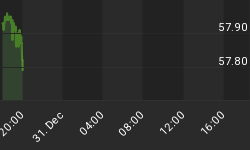Since last September the Fed has slashed the fed funds rate by 300 basis points to 2.25 per cent. Will there be anymore cuts? Not if Martin Feldstein, former chairman of President Reagan's Council of Economic Advisors, has anything to do with it. Feldstein, now a Harvard economics professor, argues that further cuts would promote commodity prices and inflation without solving the economy's woes. What he didn't say is that what the US economy needs is more production -- not more monetary manipulation -- if genuine demand is to expand.
Critics -- particularly if they are Democrats -- will respond with the argument that this is just another version of the "discredited" doctrine of "supply-side economics". These people are so obsessed with denying its effectiveness that they driven attributing any success the US economy enjoys to anything, even the Tooth Fairy, other than supply-side tax cuts, which they sneeringly call "voodoo economics". But what is supply-side economics and why are its critics determined to malign it? For part of the answer we must turn to Jean-Baptiste Say.
If there were any justice in this world the treatment dished out to Say's law of markets since Keynes' malicious misrepresentation would have long ago been exposed as a vicious calumny. (John Maynard KIeynes, General Theory of Employment, Interest and Money, Macmillan St. Martin's Press, Royal Economic Society edition, 1973, p. 18). Unfortunately an overwhelming number of economists have never read Say and have no intention of ever doing so. Now Say never argued that supply creates its own demand. What he did was to show what every competent economist of the time knew, and that was that demand springs from production. As the late Professor Hutt put it:
. . . consumption is always the extermination of power to demand. The failure of the Keynesians to understand this simple truth lies at the root of what I believe to be the most outrageous intellectual error of the age. The creation of power to demand, whether for replacement or growth, is production. Certainly production also creates the power ultimately to consume or accumulate. But with consumption the power to demand (the offer of one thing for something else) is wiped out. (W. H. Hutt, The Keynesian Episode: A Reassessment, LibertyPress, 1979, p. 341).
Without even mentioning Say's law Benjamin M. Anderson described it thus:
The prevailing view among economists . . . has long been that purchasing power grows out of production. The great producing countries are the great consuming countries. The twentieth-century world consumes vastly more than the eighteenth-century world because it produces vastly more. Supply of wheat gives rise to the demand for automobiles, silks, shoes, cotton goods, and the other things the producer wants. Supply and demand in the aggregate are thus not merely equal, but they are identical [italics added], since every commodity may be looked upon as either supply of its own or as demand for other things. But this doctrine is subject to the great qualification that the proportions must be right; that there must be equilibrium. (Benjamin M. Anderson, Economics and the Public Welfare: A Financial and Economic History of the United States 1914-1946, LibertyPress, 1979, p. 383).
It follows that an economic policy that focused on consumption at the expense of investment would eventually lower purchasing power. The classical economists did not need to be taught that goods must be produced in their correct proportions (equilibrium) if clusters of malinvestments are to be avoided. In other words, they understood that disproportionalities were part and parcel of depressions, despite their failure to explain them. They also understood -- unlike so many of the today's economists -- that it is savings and investment, not increased in consumption, that expands production. It is this process and no other that raises the real demand for labour and raises real wage rates. Anything that retards this process retards the growth in living standards.
Concentrating on production, savings and investment should reveal the destructive nature of heavy capital gains taxes. Putting the spotlight on supply (meaning production) inevitably brings to light the fundamental economic fact that if you want less of a product then penalise its production. The same goes for savings and investment. Capital gains are profits that can be directed to investment.
One does not need to be an economic genius to realise that by taxing away capital gains one is levying a tax on future living standards and hence future wage rates. (Of course, if you are a filthy rich Dem like Kennedy, Kerry or Pelosi whose aim in life is the attainment of power, then no number of economic arguments will persuade you to act in the public interest).
















